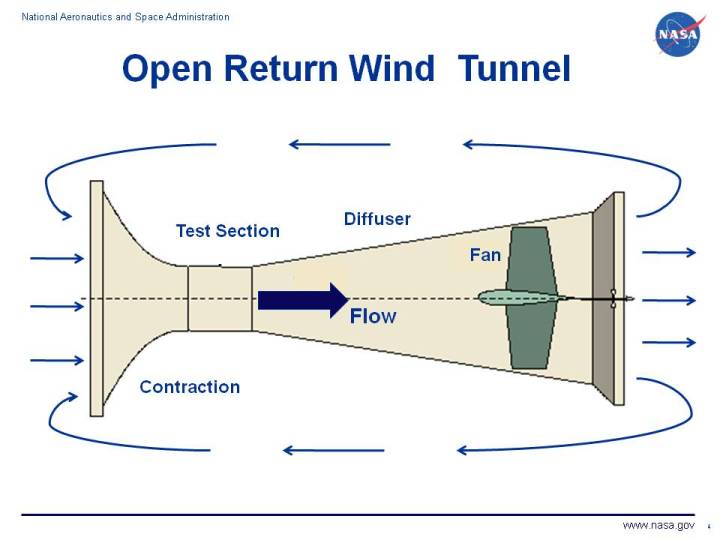A popular configuration for small tunnels is the blower type (Fig. 2), with the impeller (usually a centrifugal blower) at entry, and -- usually -- with no exit diffuser because power consumption is not very important. This allows any type of test section to be fitted without problems of matching to the diffuser. Centrifugal blowers are preferred to axial fans mainly because they will run efficiently, and generate acceptably steady flow, over a wider range of load -- i.e. a wider range of test-section configurations.
Open-circuit tunnels which take in air from the atmosphere or the laboratory are sensitive to draughts -- the NASA Ames 80 x 120 (Fig. 1) points into the prevailing northwest wind. Centrifugal blowers seem to attenuate most entry disturbances, but they are very sensitive to fluctuating swirl (axial vorticity) in the inlet, which changes the rate of rotation of the blades relative to the airflow. However, blower tunnels are often fitted with commercial air filter panels covering a large box connected to the blower intake, and the filter extracts airflow irregularities as well as dust. It is more difficult to fit a filter to a suckdown tunnel because the air entering the intake must have roughly uniform total pressure over the cross section or the "turbulence management" devices (screens and honeycombs) will not be able to deliver adequately uniform total pressure to the test section.
http://navier.stanford.edu/bradshaw/tun ... onfig.html

